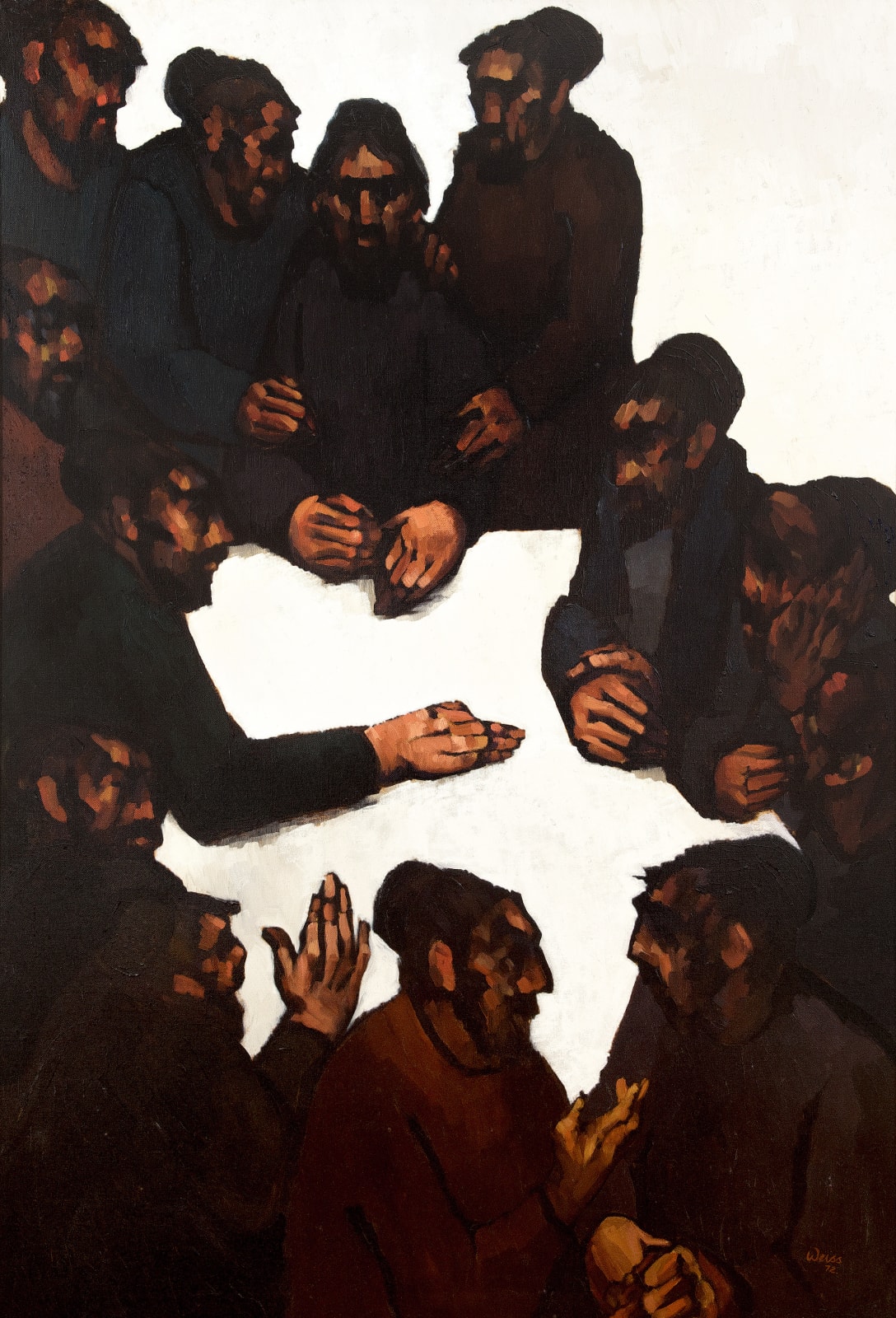Artist Ivor Weiss
Accession number 2018-11
Ivor Weiss’ son, Mark, recalled that towards the end of his life, after a series of minor heart attacks, Weiss had triple heart by-pass surgery “and it proved the catalyst for him paint Judaic subjects”. Mark says that these images “are some of his most powerful works, drawing on the traditions he grew up with in the East End among Hassidic Jews”.
In his entry for the Colchester Art Society, it is noted that: “Weiss’s paintings provide an evident love for the feel and texture of the paint itself. The black lines, which form a structure to contain the paint, have soft contours softened by square brush strokes. Line and colour merge together with dramatic effects.”
The entry continues: “Weiss’s paintings of Jewish ritual often show the importance of family and communal ties. They tend to show characters who, although grouped in various social acts such as eating and drinking, often appear isolated, their eyes having disappeared into the black lines – a metaphor for avoidance of eye contact. There is an evident feeling of distance and sadness in his work of that period.” “These scenes, which express a need for an identity, convey a certain strength of faith.”
All these aspects are present in ‘The Last Supper (2)’, where the darkly painted disciples stand out starkly against the white of the table and the background. Despite the darkness and sadness apparent in the characters as they contemplate all that Christ has told them about his leaving through his imminent death, there is also compassion and support in the disciples grouped around Christ and seeking to uphold him in his actions. While others debate and discuss, those closest to Christ hold his arms and shoulder in support as he faces exile through death.























